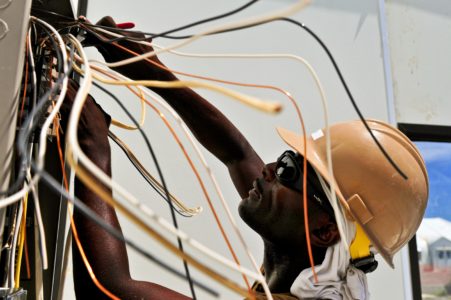
OSHA’s Lockout/Tagout standard applies to all pieces of equipment that “function together as one system” when servicing or maintenance is performed on any part of that system. Secretary of Labor v. Action Electric Co., No. 16-15792, 2017 WL 2982977 (11th Cir. Jul. 13, 2017). The Lockout/Tagout (“LOTO”) standard is designed to protect workers performing maintenance on machines from releases of stored energy in the machines or unexpected activation of the machines.
In Action Electric, an apprentice employee was preparing to perform maintenance on fans that were part of a cooling bed system in a steel mill. Numerous pieces of equipment were part of that system. The fans were used to cool steel. Separately, certain counterweights would raise and lower the cooling bed. The fans and other equipment were in a 325 foot by 100 foot basement below the cooling bed.
The steel mill had a comprehensive set of policies requiring lockout/tagout of all the cooling bed’s equipment prior to any maintenance. Nevertheless, an Action leadman took his apprentice into the basement before lockout/tagout procedures were complete. While looking at the cooling fans, a counterweight was de-energized, and it fell, striking the apprentice.
OSHA issued a citation to Action arising from the death, and Action challenged that citation. Action was able to convince an Administrative Law Judge that the LOTO standard did not apply because the counterweight was not the same equipment being serviced by the Action employee, and the employees were not servicing the fans at the time, but merely viewing them.
During the ALJ proceedings, the Secretary of Labor (through attorneys) wrote briefs clarifying that the LOTO standard applied “to all pieces of equipment that ‘function together as one system’ when servicing or maintenance is performed on any part of that system.” The Eleventh Circuit found that the ALJ should have deferred to that interpretation of the LOTO standard, and reversed the ALJ’s decision.